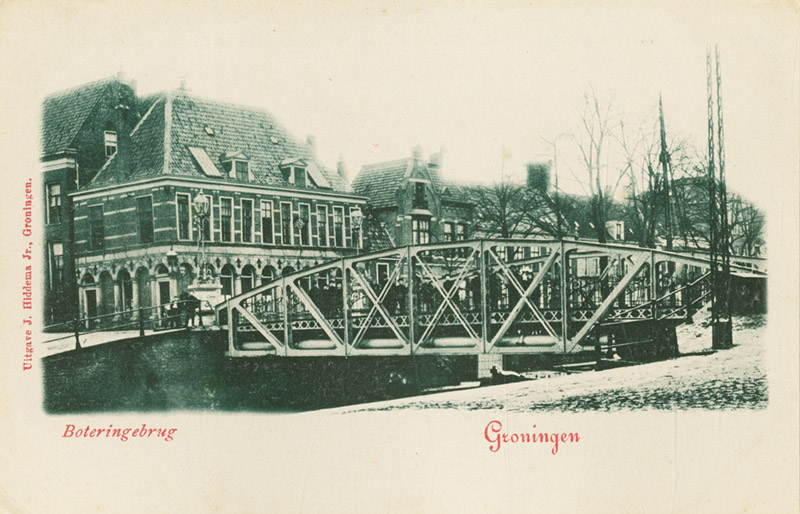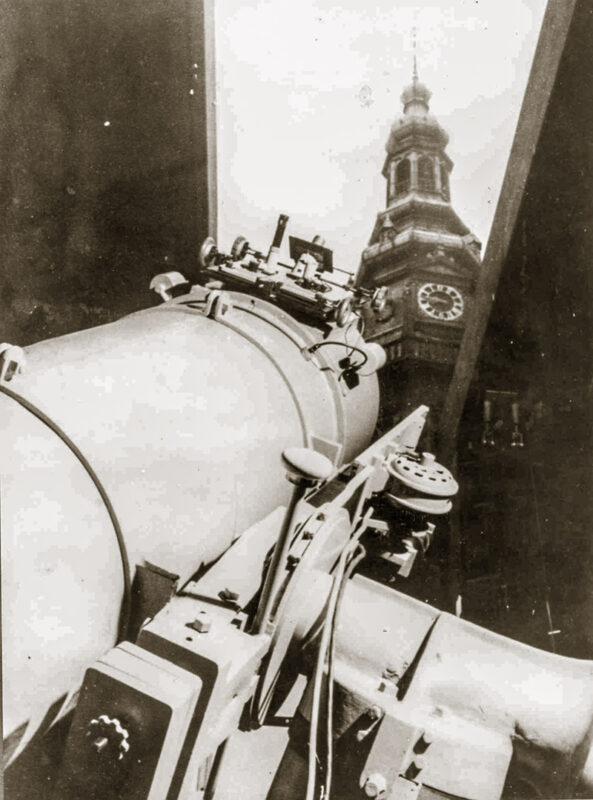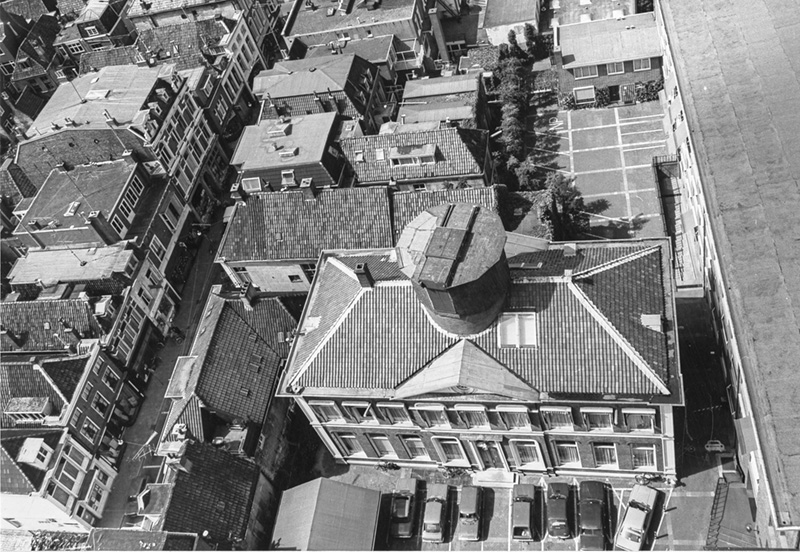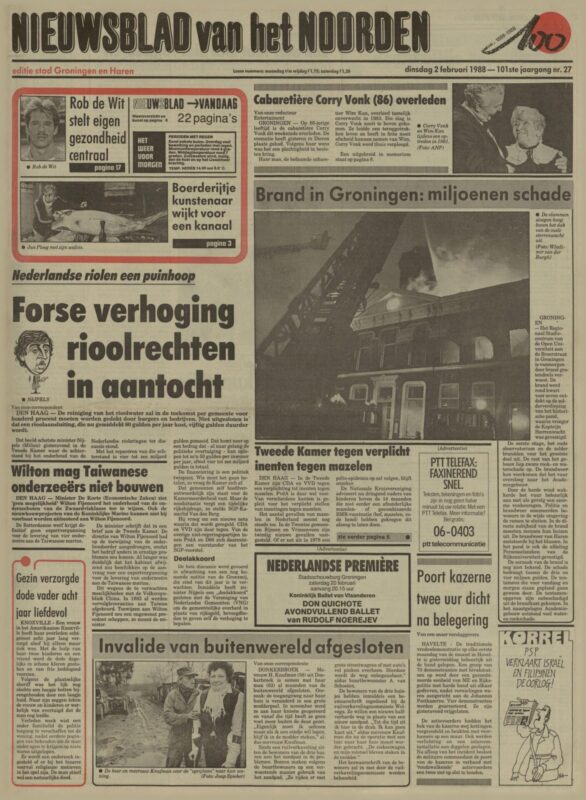waybackmachine
Car park
Academy buildingAn astronomy lab in the middle of the city
Look closely. See that little gate on the left in the ‘before’ photo? That gate is still there, in the car park behind the Academy building, at the end of the Professorengang. Everything else has completely changed, though.
Where staff and students park haphazardly park their bikes these days used to be the Astronomical Laboratory. However, it burned down entirely in 1988, and the decision was made not to rebuild it, since the astronomy department had long since moved to the Kapteynborg at Zernike.

The move to the Astronomical Laboratory in 1913 was a big deal for famous astronomer J.C. Kapteyn. He’d been appointed to the Groningen university all the way back in 1877, but even so, he did not have a laboratory or even a proper telescope.
Initially, all he had was two little rooms in the building that used to house the physiology department, run by his friend Dirk Huizinga. The only thing Kapteyn could do was take his students and climb up to the roof of the Academy building to make a few observations using a telescope that was only ever used for demonstrations.

Out of sheer desperation, he turned to theoretical astronomy: based on photos taken by Scottish astronomer David Gill on the southern hemisphere, he calculated the position of no fewer than 454,875 stars. It was an amazing feat that made him world famous.
It wasn’t until 1896 that he was given access to Oude Boteringestraat 44, which currently houses the university board. However, since his stay was only temporary, he wasn’t allowed to change anything about the building, which meant he had nothing to anchor his measuring tools. IN 1904, he finally got a real lab, a little farther down the street in what is now hotel Corps de Garde. In the photo above, you can see the slide in the roof, with a small telescope below it.

Kapteyn’s successor Pieter Van Rhijn also fought hard to get a proper telescope to Groningen when he took over the Astronomy Laboratory in 1921. Since the Groningen astronomers had since become internationally known, it made sense that it would happen.
But the government wouldn’t budge, not even when Van Rhijn bought one with private funds in the hopes that the government would at least cough up the money for the observatory dome. The ministry felt that ‘there is absolutely no reason for the Groningen astronomy department to ever pretend to need its own observation equipment’.
It took Van Rhijn until 1931 to get the money together to install a dome to house the reflecting telescope with a 55-centimetre diameter. It remained until light pollution in the city made scientific observations impossible.
In 1959, the telescope was removed from the dome when there was a crane next to the Academy building for the construction of a new wing. The crane operator was paid a box of cigars for his service. In 1965, a new observatory was finally built, this time in Roden.
After the astronomers had left, the building was used for various purposes. The Open University’s regional Study Centre was housed there, as was the UG’s Human Resources department.
But on February 2, 1988, a fire broke out in the attic. Because of the wind, sparks rained down from the attic; neighbours had to leave their houses and even the Haren fire brigade had to come in to help put the fire out. The top floor and the old observatory burned down completely. Fortunately, the exam questions for the next day had been stored in a fire-proof safe, which meant the exams didn’t have to be cancelled.
But the fire did spell the end for the Astronomical Laboratory. The damage done was so great that the university decided to raze the building and not put up a new one. All that’s left today is a car park.
Sources used for this article: Klaas van Berkel, Universiteit van het Noorden, parts I, II and III (Groningen 2014, 2017, 2022) | A. Blaauw (and others) Sterrenkijken Bekeken. Sterrenkunde aan de Groningse universiteit vanaf 1614 (Groningen 1983) | Pieter C. van der Kruit, De inrichting van de hemel. Een biografie van astronoom Jacobus C. Kapteyn (Groningen 2016) | Nieuwsblad van het Noorden, 2 febr. 1988
